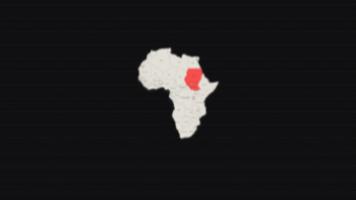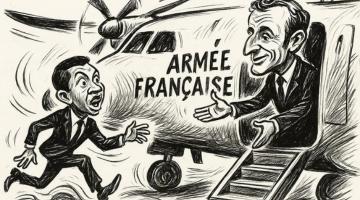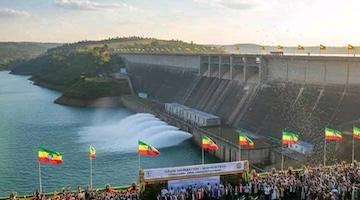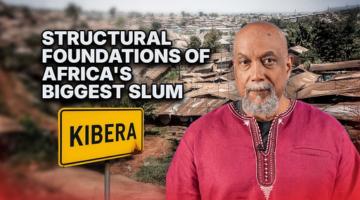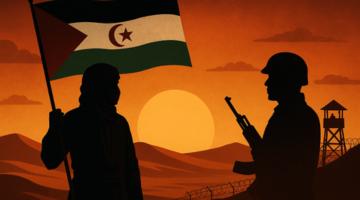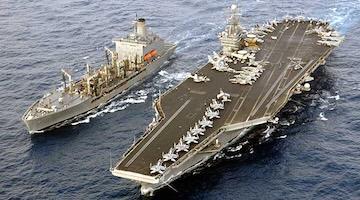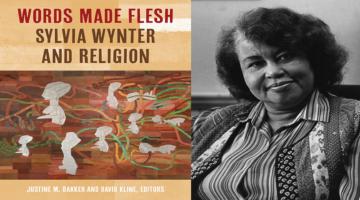Despite shared language, culture, and religion, Somalis still struggle to become a cohesive nation.
Somalia is a nation of roughly nineteen million people with territory roughly the size of Texas. Its highly geostrategic coastline is the longest in Africa, sitting at the intersection of the European, African, and Asian worlds.
For centuries, its people have united against invasion, colonization, and other forms of foreign aggression, but clan rivalry has made it difficult for Somalis to establish a cohesive national identity and central government. I spoke to anthropology professor Markus Virgil Hoehne, senior lecturer at the Institute of Social and Cultural Anthropology at the University of Göttingen, who speaks the Somali language and has studied Somali issues since 2001.
ANN GARRISON: Professor Hoehne, Somalia is very distant and unfamiliar to most of the Western audience. They’re most likely to have seen the awful movie Black Hawk Down and to have heard of the Islamic terrorist group al-Shabaab and the US bombing campaigns that have failed to defeat it for the past 18 years. They may have heard of the Somaliland secessionist state and, most recently, of Israel and Donald Trump’s proposal to move the entire population of the Gaza Strip to Somaliland or Somalia.
They have likely heard that Somalia is a failed state, one of the most lawless on earth.
Could you start by telling us why the world should care about Somalia and, more broadly, the Horn of Africa?
MARKUS VIRGIL HOEHNE: As you said, of course, it’s a geostrategically important region. A lot of the world's trade goes past the Horn of Africa, through the Gulf of Aden, either into the Red Sea or from the Red Sea into the Indian Ocean. So the Horn of Africa has always been a global hub. There has been a long history of trade between the Mediterranean area, between European empires, including the Roman Empire, and the kingdoms in the Horn of Africa and, of course, then the Arab Peninsula and, even further, Asia.
It’s also a large region in the whole of Africa that has been volatile and prone to conflict, famine, and humanitarian crisis for decades, all through the 20th century actually, and some of these problems also have spiraled beyond its borders. There are a lot of Somali refugees in Europe and the US, and the US and other Western powers have been hugely involved in the more recent political and military history of Somalia and the Horn.
AG: Somalia is one of the few ethnically homogeneous nations in Sub-Saharan Africa but, at the same time, one of the most conflict wracked. Why is this the case, even though its people all speak the Somali language, share the same culture, and practice Sunni Islam?
MVH: That's a really interesting puzzle. Most other Sub-Saharan African states have dozens of different ethnic groups, many of which would speak different languages, and conflict often results. In Somalia, as you said, there is only one; there are different dialects but only one language.
Somalis are also, as you said, culturally very similar, and they are largely Sunni Muslims. So one might expect Somalia to be among the most cohesive states in Sub-Saharan Africa, but it may be the most longstanding case of so-called state collapse in the world. It has never fully recovered from the collapse of the Siad Barre government in 1991, over 34 years ago.
Why is this so? One factor, which has been poorly understood but is now very clear is that Somali society is based on what anthropologists call a segmentary lineage system. There are a lot of different patrilineal clans, and clans are divided into sub-clans. Sub-clans divide into lineages. Lineages divide into extended families. So it's like a cascade of groupings, all connected through patrilineal descent. And it's a hallmark of such segmentary lineage systems that people can very flexibly unite. They can forge defenses against an external enemy. However, they also very quickly fragment again.
So as long as there is a powerful external enemy, like European colonists or like Ethiopia in the 1970s, it’s easy to unite Somalis against it, but once the external enemy disappears, there's internal misunderstanding, political wrangling, and competition. Then Somalis very quickly divide into smaller groups, clans, or sub-clans. This, to a certain degree, explains the political instability.
However, another factor that does a lot to explain the long term state collapse is the widespread possession of small arms that were imported into Somalia during the Cold War, from its independence in 1960 onward. Both the Eastern and Western blocs poured small arms into Somalia. Then when the Siad Barre government collapsed in 1991, the arsenals were opened. Rebels got access to all the military equipment, which poured into the rest of society. Every family is now armed, and given the fluid and unstable segmentary lineage system, people unite and divide very quickly. So everybody builds a militia.
There are flexible alliances between militias grabbing strategic resources like ports or airports or junctions or plantations, and the whole thing becomes a real mess. This is what happened in the early ’90s, and the repercussions continue today.
AG: Could you talk about the issue of nationalism versus secessionism?
MVH: This is another interesting puzzle. Despite the fact that Somalis have this kind of flexibility when it comes to uniting for common cause or against a common enemy, then fragmenting internally, Somali nationalism is still very strong. It overlays all these clan or sub-clan divisions. Somali nationalism emerged in response to colonialism, not only that of Britain, France, and Italy, but also that of Ethiopia, which Somalia has experienced historically as an imperial power.
Today, as a consequence of colonial boundaries, ethnic Somalis live in neighboring Ethiopia, Kenya, and Djibouti, and many Somalis, despite their internal fragmentation, still believe that ethnic Somalis should be one nation.
The first national parties emerged after Britain seized most of the Horn during World War II, when Somalis were under one administration, albeit colonial. The Somali Youth League (SYL) emerged as the biggest Somali party in those days. It created a national political consciousness that complemented pre-existing cultural commonalities.
Somalis became independent in 1960 when the North, which was then administered by Britain, and the South, which was administered by Italy, gained independence at roughly the same time and united to form the Somali Republic. All the Somali politicians back then aspired to forge greater Somalia, including ethnic Somalis on the other side of their artificially drawn borders. Somalia fought several wars to win back those regions, but it failed to carry the day.
Somalis lost faith in the Siad Barre government after it lost the 1977-1978 war with Ethiopia (the so called Ogaden War). Siad Barre had propagated nationalism and tried to overcome clan divisions, but when his power was weakening, he shored up his own clan bases. Clan divisions increased through the 1980s, with different militias emerging and fighting the central government.
So you can explain this as a form of fusion followed by fission. There was a fusion of Somali nationalism against the neighboring powers to win back Somali populations, but when that didn't work out, fission started. In the 1980s the government became weaker and weaker, the rebels became stronger and stronger, and everybody relied on his or her clan bases. This is how Somali nationalism declined until the Siad Barre government collapsed in 1991, and then secessionist Somaliland declared itself an independent republic within the boundaries of the former British protectorate.
Many Somalis resisted this return to colonial boundaries and have to this day, though Somali nationalism is in a very weak moment now. There’s a lot of fragmentation, and this is exploited not only by neighboring countries– Ethiopia, Kenya, Uganda, the United Arabic Emirates, and Qatar – but also by extra-regional powers, including Turkey and the US. They all want a piece of Somalia, and they all find partners and then support their partners against all the others.
AG: What role do resource issues play in the conflict? There are vast amounts of oil in Somalia, and in your book Between Somaliland and Puntland, you wrote, “If oil exploration is carried out before other problems are settled, it will be a recipe for more conflict and instability in the area.” So far as I can tell that’s already happened, hasn’t it?
MVH: There’s been some of that, but currently the resource basis of the violence in Somalia is rather meager, luckily, if you compare it with other places like South Sudan, Nigeria, or Congo, where you have huge amounts of extremely valuable natural resources being extracted. Somalia has not yet been a place where this can be profitable. There's a lot of talk about oil off the shores of Somalia and in some areas in the interior, but as far as I know, the oil extraction so far has not really started. And I would say this is a blessing, because without political stability, this could just fuel the conflict.
AG: Well, the issue is, who's got the legal authority to contract with various private or state corporations that might want to develop the oil resources, right?
MVH: Yes, and currently, from a realistic point of view, there's no authority that has the legitimacy to enter into these kinds of contracts. Formally, it would be the government in Mogadishu, but the government in Mogadishu doesn't really control much of the country. And Somaliland, which controls a certain part of Northwestern Somalia, is not a recognized country. So striking an oil deal, or any other deal with the government of Somaliland is always questionable.
There’s been a lot of legal insecurity along with all the other insecurity for the past three decades.
AG: Did the federal government’s April recognition of SSC-Khaatumo as Somalia’s Sixth Federal Member State give you any hope for Somali unionists?
MVH: Yes, I’ve always thought that the struggle of SSC-Khaatumo is a struggle for Somali unity, and other Somalis at one point recognized it as such. So, when Prime Minister Hamza Abdi Barre visited SSC-Khaatumo to formalize its recognition as a Federal Member State, I celebrated, but I have to say I’ve been discouraged by further divisions emerging since.
Dr. Markus V. Hoehne is a senior lecturer at the Institute of Social and Cultural Anthropology at the University of Göttingen. He has been working on Somali issues since 2001 and in total has conducted some three years of field research in the country (particularly in northern Somalia). He is fluent in colloquial Somali. He is the author of numerous publications on Somalia and wider African issues, including Between Somaliland and Puntland: Marginalization, Militarization and Conflicting Political Visions (2015) and, as co-editor, Borders and Borderlands as Resources in the Horn of Africa (2010).
Ann Garrison is a Black Agenda Report Contributing Editor based in the San Francisco Bay Area. In 2014, she received the Victoire Ingabire Umuhoza Democracy and Peace Prize for her reporting on conflict in the African Great Lakes region. She can be reached at ann@anngarrison.com. You can help support her work on Patreon.

